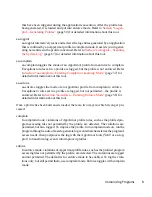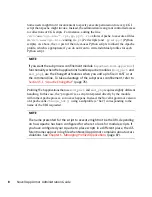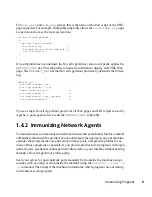
Below is a sample aa-unconfined output:
2325 /sbin/portmap not confined
3702
❶
/usr/sbin/sshd
❷
confined
by '/usr/sbin/sshd
❸
(enforce)'
4040 /usr/sbin/ntpd confined by '/usr/sbin/ntpd (enforce)'
4373 /usr/lib/postfix/master confined by '/usr/lib/postfix/master (enforce)'
4505 /usr/sbin/httpd2-prefork confined by '/usr/sbin/httpd2-prefork (enforce)'
5274 /sbin/dhcpcd not confined
5592 /usr/bin/ssh not confined
7146 /usr/sbin/cupsd confined by '/usr/sbin/cupsd (complain)'
❶
The first portion is a number. This number is the process ID number (PID) of the
listening program.
❷
The second portion is a string that represents the absolute path of the listening
program
❸
The final portion indicates the profile confining the program, if any.
NOTE
aa-unconfined requires
root
privileges and should not be run from a shell
that is confined by an AppArmor profile.
aa-unconfined does not distinguish between one network interface and another, so it
reports all unconfined processes, even those that might be listening to an internal LAN
interface.
Finding user network client applications is dependent on your user preferences. The
aa-unconfined tool detects and reports network ports opened by client applications, but
only those client applications that are running at the time the aa-unconfined analysis is
performed. This is a problem because network services tend to be running all the time,
while network client applications tend only to be running when the user is interested
in them.
Applying Novell AppArmor profiles to user network client applications is also dependent
on user preferences. Therefore, we leave profiling of user network client applications
as an exercise for the user.
6
Novell AppArmor Administration Guide















































